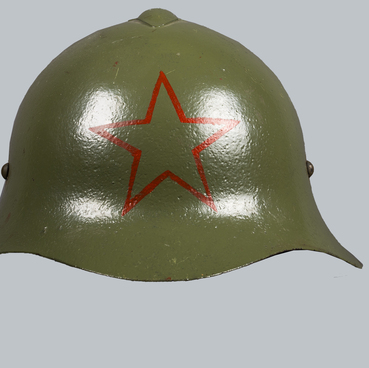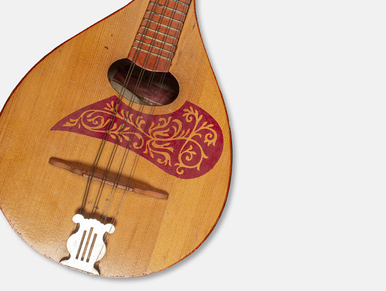The zinc medal “Winter Battle in the East 1941/42”, also known as the Eastern Medal, was made in Germany. The obverse side of this medal was given a slightly concave shape. The upper part, under the ribbon hole, features a three-dimensional image of the steel helmet M35 (Stahlhelm M35) and the offensive anti-personnel fragmentation hand grenade Stielhandgranate 24.
An imperial eagle is depicted in the center of the medal. It clutches a swastika that covers a laurel branch in its talons. The reverse side has a convex shape. In the central part, it features the inscription in capital letters “WINTERSCHLACHT IM OSTEN 1941/42” (“Winter Battle in the East 1941–1942”). Under it is a sword crossed with a laurel branch.
The manufacturer’s code is stamped on the production ring. The ribbon has five stripes of three colors. The colors symbolize the following: red — blood spilled in battles, white — the endless snow-covered fields of Russia, black — the deadly outcome of the battle and the memory of the fallen. Ernst Krause, an SS Untersharfuhrer (junior squad leader), worked on the preliminary design of the medal.
The medal was introduced in Germany on May 26, 1942. It was awarded to German servicemen who participated in the battles of the Eastern Front in the Soviet Union from November 15, 1941 to April 15, 1942. The criteria for awarding were as follows: for infantry units of the Wehrmacht, it was necessary to spend 14 days in active combat, for Luftwaffe units — to make 30 air combat sorties. The wounded and frostbitten were awarded without having to meet any other criteria.
From January 20, 1943, non-combatant Wehrmacht personnel and workers could also be presented to the award. The medal was worn on the left side of the uniform. If a serviceman died, the award was sent to his family. A total of 3 million people were awarded during the Second World War.
Today, the medal “Winter Battle in the East 1941/42” is reauthorized for wear by German veterans of World War II. However, in accordance with the Law of the Federal Republic of Germany on the status of orders and medals issued in 1933–1945 dated July 26, 1957, the award was re-designed by removing the swastika.



